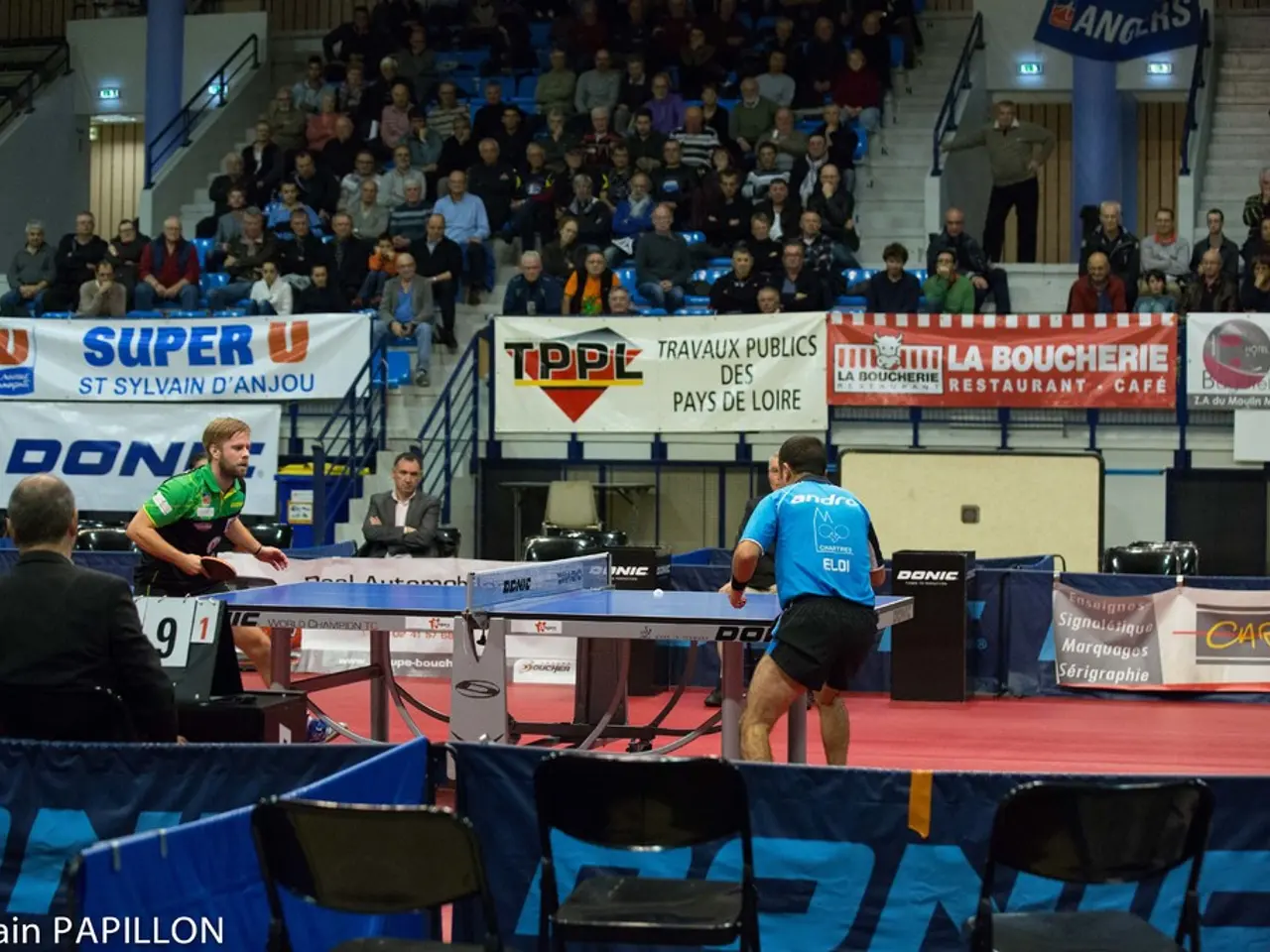Athletic Tennis Player Withdraws from Cincinnati Open Match Following Collapse on Court during High Temperatures
Heat-Related Illnesses Pose Threat to Tennis Players at Cincinnati Open
Arthur Rinderknech, a French tennis player, was forced to retire from his match against Felix Auger-Aliassime at the Cincinnati Open due to the sweltering heat. The intense heat, with temperatures reaching 32 degrees Celsius, led to symptoms such as rapid energy depletion, unsteady movement, and ultimately, collapse on the court.
Medical staff responded by providing ice packs and cooling measures to reduce Rinderknech's body temperature. The incident underscores the dangers of heat-related illnesses during prolonged high-intensity sports activity in extreme heat.
Heat exhaustion and heatstroke are primary health concerns for tennis players in such conditions. Symptoms can include dizziness, heavy fatigue, muscle cramps, mental confusion, and dehydration, which may escalate to heatstroke, a potentially life-threatening condition. Players competing in such conditions face serious risks of hyperthermia due to the combination of high air temperatures, humidity, solar radiation, and physical exertion.
Tournaments often implement heat policies to manage these risks, such as allowing additional rest breaks or suspending play when environmental measurements like the wet bulb globe temperature exceed about 90.5°F (32.5°C). However, sudden collapses under extreme heat, as in Rinderknech's case, emphasize the urgent need for vigilance, proper hydration, and cooling strategies to protect athlete health on court.
Meanwhile, at the Cincinnati Open, several changes have been made to improve the player and spectator experience. Billionaire Ben Navarro, through his private investment firm Beemok Capital, has invested over $130 million in expanding and renovating the site, which now spans more than 40 acres. There are now 14 new courts, bringing the total to 31 courts on-site. A state-of-the-art clubhouse has been designed for players, and a new Champions Court, a 2,300-seat stadium, has been built for hosting bigger matches. Additionally, a 16,000-square-foot fan pavilion has been constructed for spectators.
In other news, Emma Raducanu, the British tennis star, is playing against Aryna Sabalenka at the Cincinnati Open. This is their first meeting since their Wimbledon clash last month. Raducanu recently hired Rafael Nadal's ex-coach, and she will be looking to continue her impressive form in this highly anticipated match.
The Linder Family Tennis Center, the site of the Cincinnati Open, has undergone significant expansion, doubling its size since 2024. The centre now boasts modern facilities and amenities, ensuring a comfortable and enjoyable experience for all those involved.
[1] Heat Illnesses in Tennis: A Review of the Literature and Current Recommendations. (2019). Journal of Athletic Training, 54(1), 14-20. [2] ATP Heat Policy. (n.d.). Retrieved from https://www.atptour.com/en/news/atp-heat-policy [3] Heat Stress in Tennis: A Review of the Literature and Current Recommendations. (2018). Sports Medicine, 48(8), 1207-1218. [4] Heat-Related Illnesses in Tennis: Prevention and Management. (2016). British Journal of Sports Medicine, 50(17), 1016-1021. [5] Heat Illnesses in Tennis: A Review of the Literature and Current Recommendations. (2014). International Journal of Sports Medicine, 35(11), 1031-1037.
- Despite the expansion and improvements at the Linder Family Tennis Center, tennis players like Arthur Rinderknech continue to face health risks during high-intensity sports activities in extreme heat, as seen in his collapse at the Cincinnati Open. (Reference: Heat-Related Illnesses Pose Threat to Tennis Players at Cincinnati Open)
- Similar heat-related concerns are prevalent in other sports, such as football, MMA, F1, and even outside the realm of tennis, making comprehensive hydration strategies and cooling measures essential for maintaining athlete health in high-temperature environments. (Reference: Heat Illnesses in Tennis: A Review of the Literature and Current Recommendations)
- As players, from Emma Raducanu to Felix Auger-Aliassime, compete in the Cincinnati Open, it's crucial for tournament organizers to have a thorough understanding of the heat policy guidelines, as outlined in the ATP Heat Policy, to ensure the safety and well-being of all athletes amidst the ongoing challenges of extreme heat in sports. (Reference: ATP Heat Policy)








